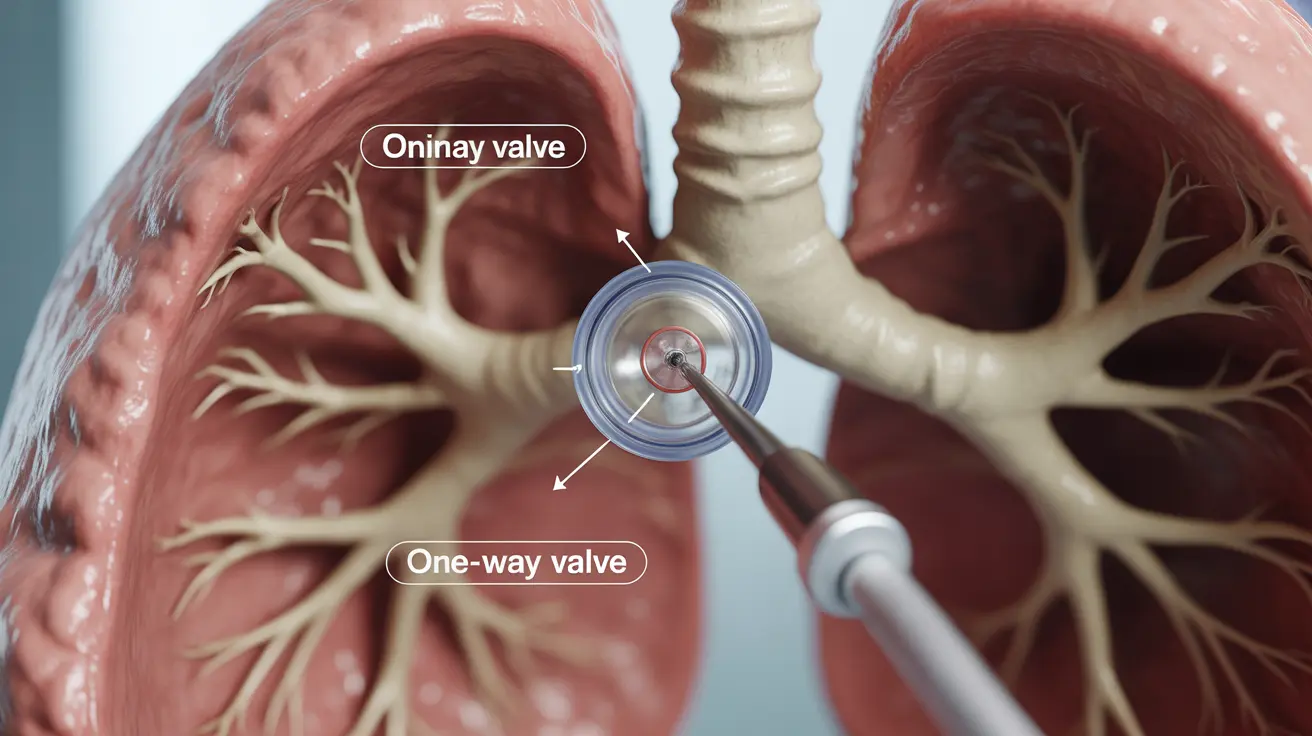Lung valve surgery represents a significant advancement in treating severe emphysema and chronic obstructive pulmonary disease (COPD). This minimally invasive procedure offers hope to patients who struggle with breathing difficulties and reduced quality of life due to these progressive lung conditions.
For many individuals living with advanced lung disease, traditional treatments may not provide sufficient relief. Understanding lung valve surgery, its benefits, and what to expect can help patients make informed decisions about their treatment options.
What is Lung Valve Surgery?
Lung valve surgery involves the placement of tiny, one-way valves into targeted airways of the lungs. These valves are designed to block off damaged areas of the lung while allowing trapped air to escape, effectively reducing hyperinflation and improving breathing function in healthier portions of the lung.
Unlike traditional surgical approaches, lung valve placement is performed through a bronchoscope, making it significantly less invasive than conventional lung volume reduction surgery. This innovative approach typically requires only a short hospital stay and carries fewer risks compared to open surgery.
Candidacy and Evaluation Process
Not everyone with emphysema or COPD is suitable for lung valve surgery. Doctors carefully evaluate potential candidates based on several criteria:
- Severe emphysema with hyperinflation
- Limited response to traditional medical therapy
- Relatively good overall health status
- No active lung infections
- Specific patterns of emphysema distribution in the lungs
The evaluation process typically includes detailed imaging studies, pulmonary function tests, and comprehensive medical assessments to ensure the procedure will be both safe and effective for the patient.
Benefits and Expected Outcomes
When successful, lung valve surgery can provide several significant benefits:
- Improved breathing capacity
- Reduced shortness of breath
- Enhanced exercise tolerance
- Better quality of life
- Decreased dependence on supplemental oxygen
- Reduced frequency of COPD exacerbations
The Procedure and Recovery Process
The lung valve surgery procedure typically takes between 30-60 minutes and is performed under general anesthesia. During the procedure, a physician uses a bronchoscope to place the valves in predetermined locations within the airways.
Recovery usually involves:
- 3-5 days of hospital monitoring
- Gradual return to normal activities over 4-6 weeks
- Regular follow-up appointments
- Continued pulmonary rehabilitation
- Medication adjustments as needed
Integration with Other COPD Treatments
Lung valve surgery often works best as part of a comprehensive treatment approach. Patients typically continue with:
- Prescribed medications
- Pulmonary rehabilitation programs
- Smoking cessation (if applicable)
- Regular exercise routines
- Breathing techniques and strategies
Frequently Asked Questions
How does lung valve surgery differ from traditional lung volume reduction surgery, and what are the benefits of each approach?
Lung valve surgery is minimally invasive, using bronchoscopy to place one-way valves, while traditional lung volume reduction surgery requires open chest surgery to remove damaged lung tissue. The valve approach offers shorter recovery times and fewer complications, though traditional surgery may be more appropriate for certain patients based on their specific condition.
What are the typical symptoms that indicate someone might be a candidate for lung valve surgery, and how is eligibility determined?
Key symptoms include severe shortness of breath, reduced exercise capacity, and hyperinflation despite optimal medical therapy. Eligibility is determined through comprehensive testing, including CT scans, breathing tests, and exercise capacity evaluations.
What are the common risks or complications associated with lung valve surgery, and how are they managed?
Common risks include pneumothorax (collapsed lung), infection, valve migration, and temporary coughing or discomfort. These complications are managed through careful monitoring, prophylactic antibiotics when needed, and prompt medical intervention if issues arise.
How long does it usually take to recover from lung valve surgery, and what are some steps to aid in a smooth recovery?
Recovery typically takes 4-6 weeks. Key steps include following post-procedure care instructions, attending all follow-up appointments, participating in pulmonary rehabilitation, and gradually increasing activity levels as advised by healthcare providers.
Can lung valve surgery be used in conjunction with other treatments for emphysema or COPD, and what are the guidelines for combining therapies?
Yes, lung valve surgery can be combined with other COPD treatments. Guidelines typically recommend continuing standard COPD medications, pulmonary rehabilitation, and lifestyle modifications. The specific combination of therapies is tailored to each patient's needs and response to treatment.




